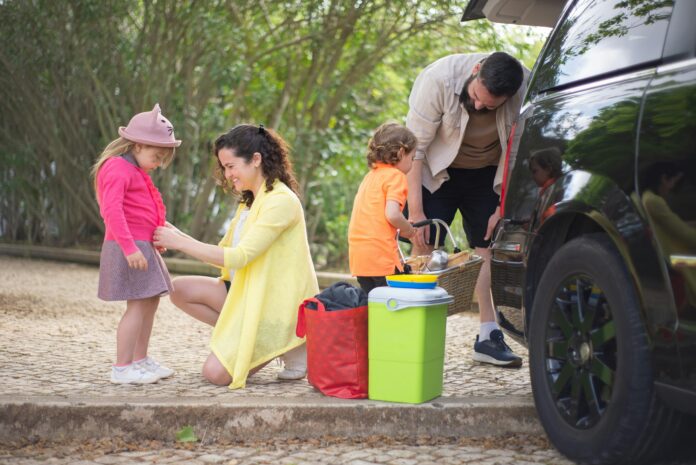Namibia is a top regional holiday destination for South Africans, with multiple daily non-stop flights from both Cape Town and Johannesburg (spanning approximately two hours). ‘The Land of Contrasts’ also happens to be Flight Centre South Africa’s top pick for a cost-effective intra-African getaway.
“Exploring this remarkable country has become more accessible than ever. This is due to the rising competitiveness of regional airlines, the inclusion of budget-friendly campsites, all-inclusive, and self-catering accommodations in Namibia’s nature reserves, and the growing popularity of self-drive adventures,” says Antoinette Turner, GM of Flight Centre South Africa.
And speaking of self-drive adventures, while it’s more convenient (and often more affordable) to fly, South Africans can also choose a road trip when headed to Namibia. There are 3 main routes to choose from, each with their own pros and cons. Read on to see how they stack up.
- The Direct Route (N1 Highway through Botswana)
- Distance: Approximately 1,500 km
- Travel time: 16-18 hours (non-stop)
- Need-to-know:
- Fastest route
- Well-maintained N1 highway
- Crosses through Botswana, requiring more than one border crossing
- Less scenic compared to other routes
This route is the most practical if your priority is reaching Namibia quickly – and the N1 highway is in good condition, making for a smooth drive. However, be aware of border crossing procedures and potential delays at both the South Africa-Botswana and Botswana-Namibia borders.
Flight Centre’s Travel Experts recommend breaking the journey into at least two days, with an overnight stay in Gaborone or Kang.
- The Kalahari Route
- Distance: Approximately 1,800 km
- Travel time: 20-22 hours (non-stop)
- Need-to-know:
- Passes through the Kalahari Desert
- Offers spectacular desert landscapes
- Opportunity to visit Kgalagadi Transfrontier Park
- Can be challenging due to gravel roads and remoteness
“There are various stops to consider to break up the journey when driving the Kalahari Route. For example, a stop in Kgalagadi Transfrontier Park, known for its excellent rest camps and desert-adapted wildlife. Keetmanshoop – a small Namibian town – is another guaranteed highlight, with its quiver tree forest and nearby Giant’s Playground (a collection of massive dolerite rock formations). And the trip wouldn’t be complete without exploring the ghost town of Kolmanskop,” Turner advises.
- The Scenic Route (via Kimberley and Upington)
- Distance: Approximately 2,000 km
- Travel time: 22-24 hours (non-stop)
- Need-to-know:
- Beautiful scenery, including mountains, deserts, and rivers
- Opportunity to visit Kimberley’s Big Hole and Augrabies Falls National Park
- Mostly paved roads, allowing for a comfortable, more predictable drive
Do you believe in the age-old adage that the journey should be just as enjoyable as the destination? Then this is the route for you. As its name suggests, it’s the most scenic, allowing you to appreciate the diversity of South Africa and Namibia’s landscapes.
“I’d recommend spending at least one night in Kakamas, a small town on the banks of the Orange River in the Northern Cape. It’s a little treasure off the beaten path and known for its vineyards and fruit orchards. Vioolsdrif is another option, close to the Namibian border and part of the Namaqualand region. You may even see the town’s legendary wildflowers if travelling between August and September,” says Turner.
Tips for your road trip
- You’ll need a reliable vehicle for this journey – ideally a 4×4 – especially if taking the Kalahari Route.
- Service your vehicle beforehand, and don’t forget essential spares like two spare tires and a well-stocked toolkit.
- Equip your vehicle with emergency supplies like a first-aid kit, a flashlight, and jumper cables – they’re a lifesaver in unforeseen situations.
- Do your homework to avoid any bumps in the road when crossing borders. Ensure everyone has a valid passport with sufficient blank pages for entry stamps. Your vehicle’s registration papers and a valid driver’s license are also a must. Plus, if you’re not the owner of the vehicle, make sure you’re carrying a notarised letter of authorisation from the owner.
- Be prepared for long queues when crossing borders – anything from 30 minutes to a few hours is the norm. Avoid crossing on the weekend or during the peak holiday period, if possible.
- Namibia and Botswana’s road networks differ significantly from South Africa’s. Expect lots of gravel roads, even on major routes, which demand cautious driving and reduced speeds.
“Ultimately, road tripping to Namibia demands a lot more planning and energy than hopping aboard a flight – but it’s an experience every South African traveller should have at least once. It’s wonderful for a broader, multi-faceted view of this small, yet diverse portion of our continent,” concludes Turner.
So, fuel up, grab your GPS, and hit the road. The ‘Land of Contrasts’ awaits.

